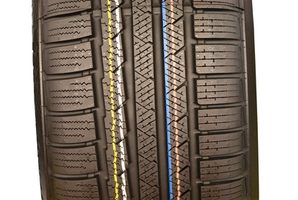The state of Maine has a motor vehicle inspection program that is designed to make its highways safe by requiring annual inspections of vehicles registered in the state. When the vehicle’s state inspection becomes due, the owner then takes the vehicle to a state-approved inspection station to have items inspected such as brakes, lights, wipers and tires. The depth of the tire treads must meet minimum requirements or the vehicle may fail the inspection.
Things You’ll Need
- Tire depth gauge (available where automotive tools or tires are sold)
-
Obtain a tire tread depth gauge which is calibrated in 1/32-inch increments.
-
Push the calibrated plunger on the depth gauge all the way down so that the metal probe on the opposite end of the gauge is protruding fully.
-
Position the metal probe of the depth gauge directly over the top of one of the grooves of the tire tread. Make sure the shoulders of the gauge are resting on the surrounding raised tire tread and that the probe is not positioned over a tread wear indicator, which is a raised section of the groove.
-
Push down on the calibrated plunger until the metal probe reaches the bottom of the groove.
-
Raise the gauge up from the tire by the base, and not the plunger. Observe how much of the gauge is sticking out of the base. Know that anything less than 2/32 inch, or two graduated marks on the gauge, means that that tire needs to be replaced before it will pass a state of Maine vehicle inspection.
Tips & Warnings
- Take tread depth readings at different points around the circumference of the tire, as well as at the center and outer edges of the tire tread. Readings that differ in depth at different points around the tire may indicate problems with vehicle alignment, shock absorbers or suspension. Any reading of less than 2/32 inch may cause the vehicle to fail its state of Maine inspection.
